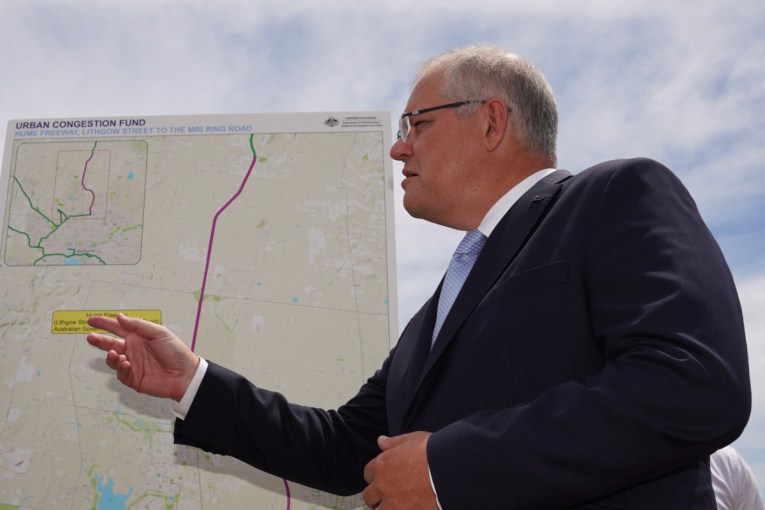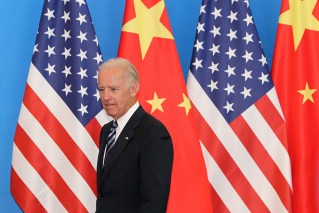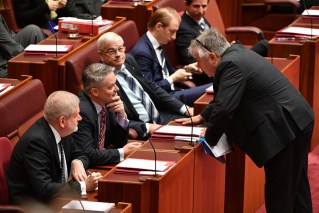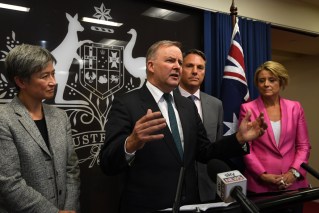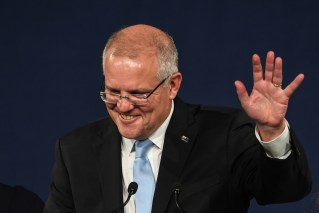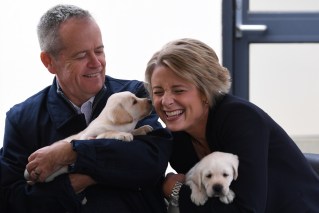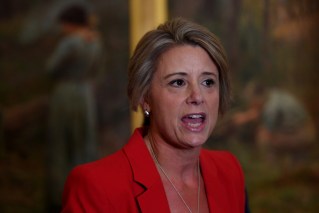Vandals target world-famous Bells Beach with anti-Adani, Fight for the Bight graffiti

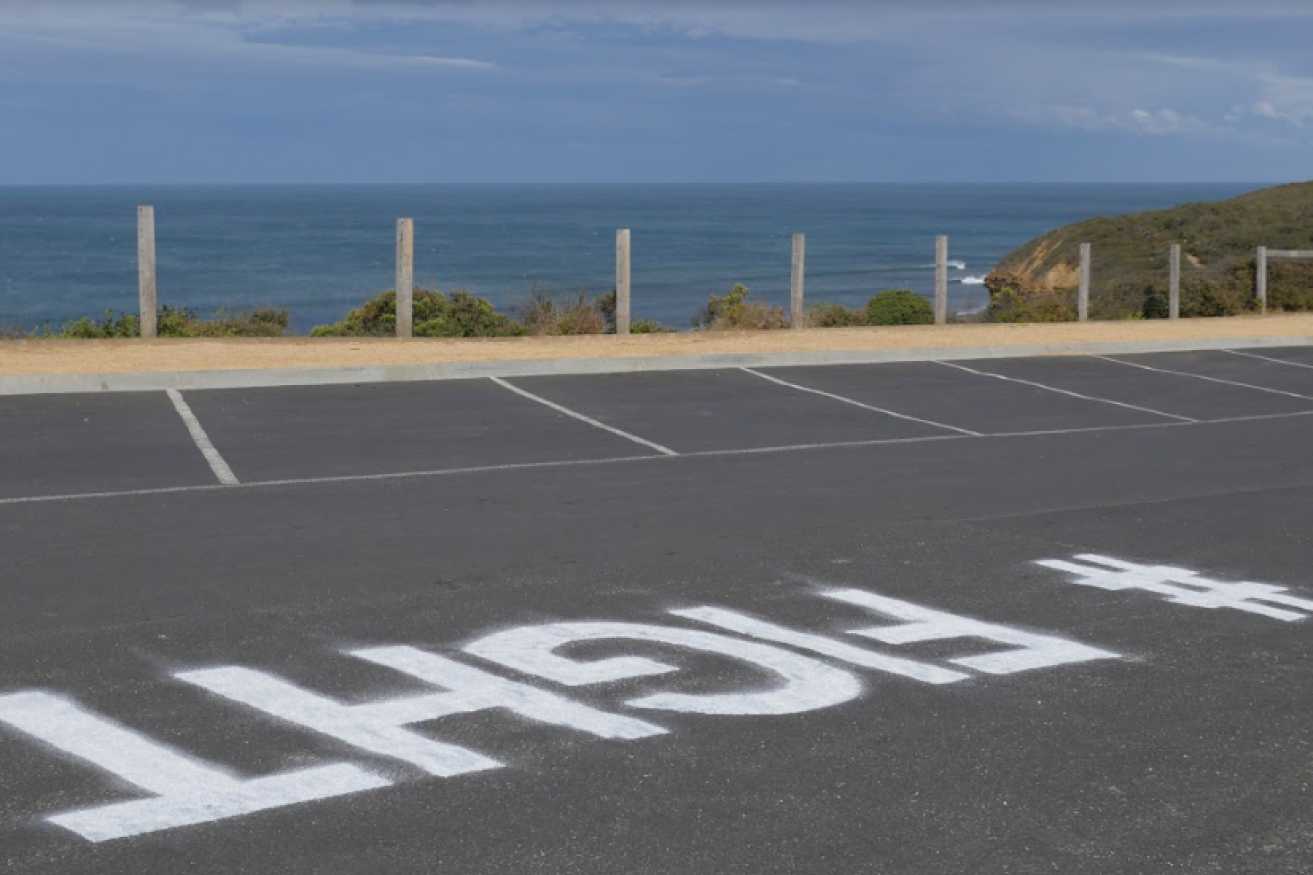
Critics have blasted the graffiti at Bells Beach as hypocritical but protesters say they want to draw attention to the Fight for the Bight.
Bells Beach, one of the world’s premier surfing reserves, has been the target of vandalism as the fight against an oil giant’s plans to drill the Great Australian Bight took a divisive step on Thursday.
A group of protesters behind the graffiti have told The New Daily why they went under the cover of darkness on Victoria’s Surf Coast to spray-paint giant slogans at the entrance way to the home of Australian surfing and the car parks of surrounding beaches, including at the Point Addis Marine National Park.
“We are taking action to protect these special places and say no to this catastrophic plan,” one protester said.
The New Daily understands there are plans afoot to target other major Australian tourist attractions.
On Thursday night the Surf Coast Highway, near the start of the famous Great Ocean Road, was also sprayed.
The vandalism appears to also be in support of recent rallies against the Adani coal mine.

Protesters have spray-painted slogans at famous surf spots and nature reserves on the Great Ocean Road.
It comes while campaigners, including an indigenous community leader and surfers, travelled to Norway to confront executives at the annual general meeting of oil company Equinor, which wants to drill the seabed at depths of 2000 metres off the coast of South Australia.
“We love our beautiful beaches, our world-class waves and precious marine life,” one campaigner behind the graffiti said.
“Drilling for oil in the wildest and most volatile ocean on the planet is absolutely insane – Equinor’s dangerously risky proposal is a disaster waiting to happen.”
Last month some of the greatest names in world surfing joined the protest against the drilling plan as crowds descended on Bells Beach to watch massive swells hit in time for the Rip Curl Pro.
World champions Mick Fanning, Layne Beachley and Steph Gilmore backed the campaign, as did the World Surf League and numerous other pro surfers including Sally Fitzgibbons and Jack Freestone.
Silverchair musician Daniel Johns and the band The Veronicas have also joined the cause.

Australian surfer Steph Gilmore with Surf Coast Independent candidate Damien Cole at Bells Beach in April. Photo: Damien Cole/ Instagram
“I haven’t seen anything like this before,” Beachley, a seven-time world champion, told The New York Times at a protest at Bondi, New South Wales.
“To see so many surfers standing up and using their voice and position to let the people in power know we’re vehemently against this proposal is really powerful.”
While the Fight for the Bight protests have gained worldwide attention and large-scale community action, neither the Coalition or Labor has committed to stopping Equinor’s drilling.
- Learn more about the plan here: ‘This is not a drill’
But on Wednesday, Opposition Leader Bill Shorten announced that if the Labor Party was elected he would swiftly order an “oil spill study”.
“I want to understand the consequences of an oil spill in the Bight … and I think that that is what is concerning a lot of our surfers and people who care about our coastline,” Mr Shorten said.
Wilderness Society national director Lyndon Schneiders responded: “(Mr Shorten) is breaking the bipartisan silence in the issue, but the best way to reassure concerned Australians is to rule out all support for the project, full stop.
“Communities across southern Australia are demanding leadership and iron-clad commitments.”
Until now campaigners have mainly been active on social media, sand messages and mass demonstrations in surfing communities and capital cities where tens of thousands of people have paddled out on surfboards, chanting “No way Equinor”.
Those public efforts have been supported by the Greens, the Wilderness Society and Greenpeace as well as a number of local councils, independent think tanks and industry groups.
Protesters behind the recent guerrilla tactics told The New Daily they decided to turn to graffiti – despite the threat of police action and community backlash – because they felt the federal government had not listened to their more passive demonstrations or the thousands of submissions to the National Offshore Petroleum Safety and Environmental Management Authority (NOPSEMA).
“Our coastal community wants to highlight exactly what oil giant Equinor’s disastrous proposal is putting at risk – Bells Beach, Point Addis, Torquay,” a protester said.

Fight for the Bight gatherings held at beaches across Australia.
“We are calling on our incoming government to stand up and do the right thing.”
Another spray painter said he would never normally have been involved in vandalism but felt it was his duty to take a risk to draw attention to the cause.
He added that ordinary people who had previously been politically disengaged were becoming more passionate and mobile over fears for the environment.
But the actions have drawn criticism from some locals.
Surf Coast identity, radio host and former Big Brother contestant Paul Dyer wrote on social media: “Wow not cool at all! Own up or be UnAustralian thank you” (sic).
Winkipop-Bells Beach social media page wrote: “The Sanctuary should remain sacred”.
Another man said: “I’m all about people speaking up and protecting the coastline but why would you go and vandalise the very thing you are trying to save from potential disaster … You were a voice now you’re just another vandal”.

Hypocritical? Some critics say so after anti-oil, anti-Adani protesters spray-painted at surfing reserves including Bells Beach.
The Norwegian state-owned company Equinor has been lashed by fierce opposition this year after its disaster-mitigation strategy showed that if its drilling plans went awry, oil could spread across the southern coast of the Australian mainland and around Tasmania.
Equinor is confident the chances of a spill are extremely low, maintaining its exploratory drilling could uncover resources that it believes could be one of Australia’s largest “untapped oil reserves”.
It says the drilling, to begin in 2020, could eventually create more than 1000 jobs.
Research by think tank the Australia Institute, however, showed the economic benefit and impact on the labour market would be minimal while the project carried great risk to tourism, aquaculture and wild fisheries.
And there has been no guarantee about whether resources would stay in Australia – or how oil would be refined.
